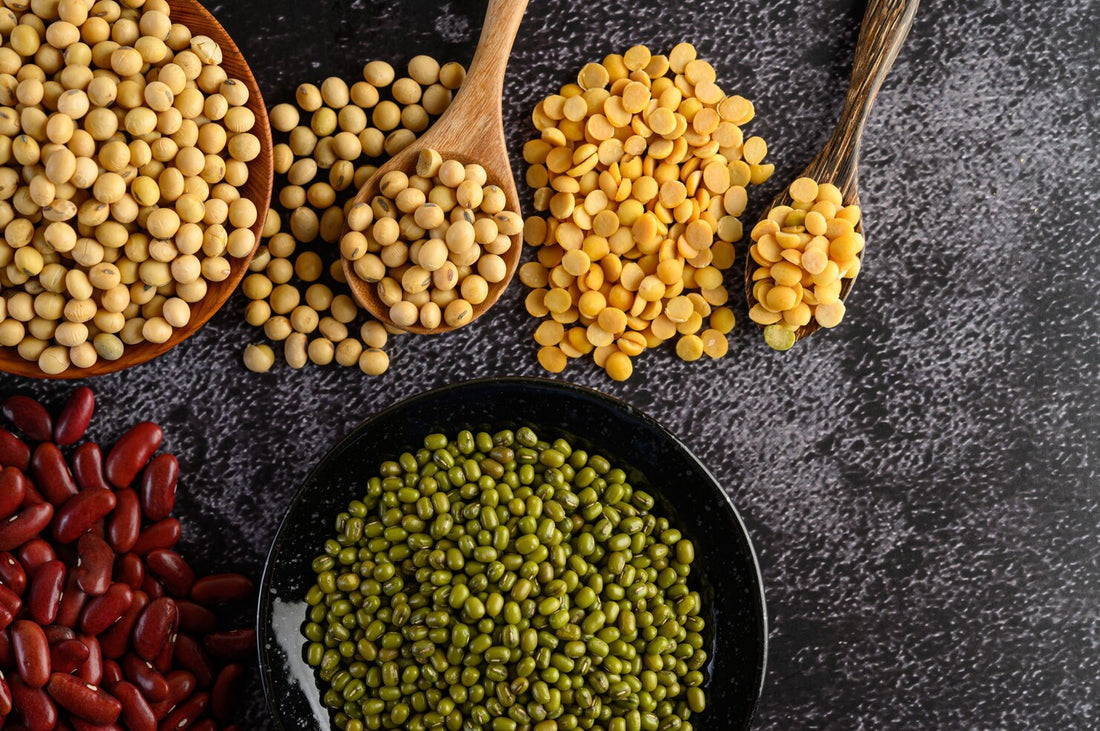When it comes to snacks for kids, the options are endless—but not all snacks are created equal. Potato crisps may be a popular choice, but lentil and pea-based snacks are quickly emerging as a smarter, healthier option. Here’s why lentil and pea snacks deserve a place in your pantry, especially if you're choosing for children.
1. More Protein for Growing Bodies
Children need protein to fuel their growth, strengthen their muscles, and support their energy needs. Lentil and pea snacks are naturally rich in plant-based protein, providing a satisfying and nutritious alternative to crisps, which are low in protein and high in empty calories.
Protein Showdown: Lentil & Pea Snacks vs. Potato Crisps
- Lentil & Pea Snacks: Typically, these snacks offer around 13 grams of protein per 100 grams. That’s a significant amount for a crunchy, satisfying snack and contributes meaningfully to a child’s daily protein needs.
- Potato Crisps: By comparison, regular potato crisps contain only about 6–7 grams of protein per 100 grams, depending on the brand and preparation method.
This means lentil and pea snacks provide nearly double the protein of potato crisps.
Why Protein Matters for Kids
Protein isn’t just for bodybuilders—it’s a vital nutrient for kids, too!
- Supports Growth: Protein is the building block of muscles, bones, and tissues. Kids are constantly growing, so they need plenty of protein to keep up with their development.
- Boosts Energy: Protein provides long-lasting energy, perfect for active days filled with school, sports, and play.
- Aids Brain Function: Protein is crucial for producing enzymes and hormones that help with focus and learning.

2. Fibre for Better Digestion
Lentils and peas are packed with dietary fibre, a crucial nutrient for healthy digestion. Kids often fall short of their daily fiber requirements, and these snacks offer an easy way to help them get there. Potato crisps, on the other hand, contribute very little to daily fibre intake.
How Much Fibre Are We Talking About?
- Lentil and Pea Snacks: These snacks typically provide 4–8 grams of fibre per 100 grams, depending on the brand and preparation. This is a significant contribution to the recommended daily intake for children.
- Potato Crisps: In contrast, potato crisps usually contain 1–2 grams of fibre per 100 grams, meaning they contribute very little to overall fiber needs.
That means lentil and pea snacks can have 4 times more fibre than regular potato crisps!
3. Less Grease, More Nutrients
Traditional potato crisps are often deep-fried, making them high in unhealthy fats. Lentil and pea snacks, however, are frequently baked or prepared with minimal oil, offering a crispy texture without the heavy grease. They also retain more of their natural nutrients, such as vitamins, minerals, and antioxidants.
4. Sustained Energy for Busy Days
Kids have boundless energy, and they need snacks that can keep up. Lentil and pea snacks provide complex carbohydrates that release energy slowly, keeping little ones energised for school, play, and beyond. Potato crisps, loaded with refined carbs, cause quick energy spikes followed by crashes—a recipe for mid-afternoon meltdowns.

5. Better for the Planet
Choosing lentil and pea snacks isn’t just good for kids—it’s great for the planet too. These crops are more sustainable to grow than potatoes, requiring less water and naturally enriching the soil. By choosing these snacks, you’re also teaching children about the importance of eco-friendly choices.
Efficient Use of Water
Water is one of our most precious resources, and the crops we grow have a big impact on how much water we use.
- Lentils and Peas: These plants are drought-resistant and need significantly less water to grow. For example, peas require about half the water that potatoes do to produce the same amount of food. This makes them an excellent choice for areas where water conservation is critical.
- Potatoes: Potatoes are a thirsty crop. They require more water during their growing cycle, especially in hotter climates where irrigation is needed to maintain high yields.
Lentils and peas belong to a family of plants called legumes, which have a special ability to improve soil health.
- Lentils and Peas: These crops work with bacteria in the soil to capture nitrogen from the air and store it in their roots. This process, called nitrogen fixation, reduces the need for synthetic fertilizers. Healthy soil means better yields for future crops and less chemical runoff into waterways.
- Potatoes: Potatoes are nutrient-hungry plants, which means they deplete the soil more quickly. They often require chemical fertilizers to replenish nutrients, contributing to environmental harm.
The production of lentils and peas generates fewer greenhouse gas emissions compared to potatoes, especially when considering how they are processed into snacks.
- Lentil and Pea Snacks: These crops grow quickly and don’t require as much machinery or energy-intensive farming practices. Additionally, many plant-based snacks are baked rather than fried, further reducing their environmental impact.
- Potato Crisps: Growing and processing potatoes into crisps requires more energy at every stage. From the irrigation needed to grow potatoes to the oil used for frying, the carbon footprint of potato crisps is higher.
Diverse farming systems are better for the planet because they support a variety of plants, animals, and insects.
- Lentils and Peas: These crops are often grown as part of crop rotation systems, where different types of plants are grown in the same field over time. This helps maintain soil health, reduce pests naturally, and support biodiversity.
- Potatoes: Potatoes are often grown in monocultures (fields of only one crop), which can lead to soil degradation, increased pest problems, and greater reliance on chemical pesticides.
The way snacks are made also affects the environment. Lentil and pea snacks often involve simpler, less wasteful processes.
- Lentil and Pea Snacks: Many brands focus on using minimal ingredients and avoiding excessive processing. The result? A snack that’s closer to its natural state, with less waste produced during manufacturing.
- Potato Crisps: Making crisps requires peeling, slicing, frying, and seasoning, which creates more food waste and requires more energy.
When parents choose lentil and pea snacks, they’re not just making a healthier choice—they’re also teaching kids about the importance of caring for the planet. Introducing eco-friendly snacks helps children understand that their food choices have an impact on the environment, fostering a sense of responsibility from a young age.
Healthy eating habits start young. By introducing lentil and pea snacks as a go-to option, you’re setting the foundation for smarter food choices that will benefit children as they grow. These snacks provide essential nutrients while helping kids develop a taste for wholesome, balanced foods.

Conclusion
Switching from potato crisps to lentil and pea snacks is a small change that makes a big difference for the environment. These snacks use less water, improve soil health, produce fewer emissions, and support biodiversity—all while delivering a crunchy, delicious treat.
By choosing snacks that are better for the planet, you’re not only nourishing your kids but also teaching them how to care for the Earth. It’s a decision that benefits everyone, from growing bodies to the environment.
These are the reasons why Human Nature will soon be launching a kids’ snack made with plant-based ingredients such as lentils and peas—because little choices can make a big difference!

